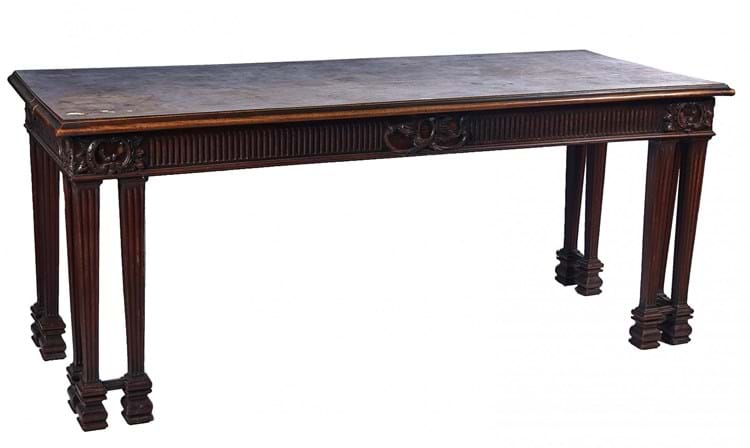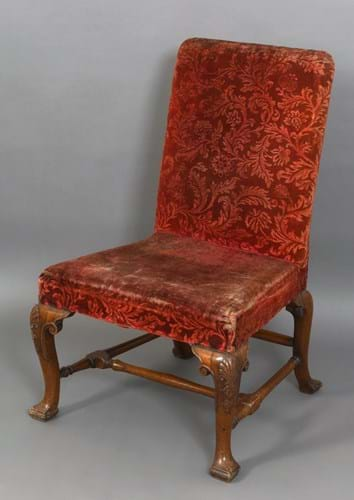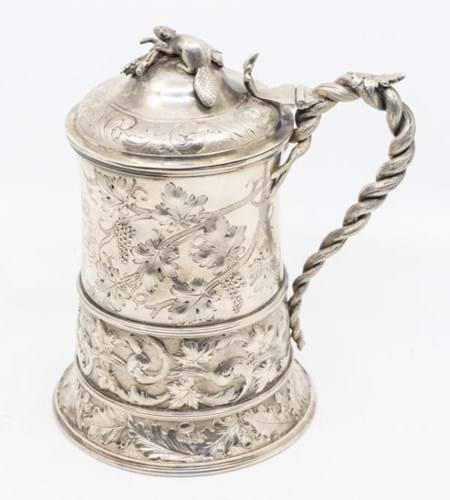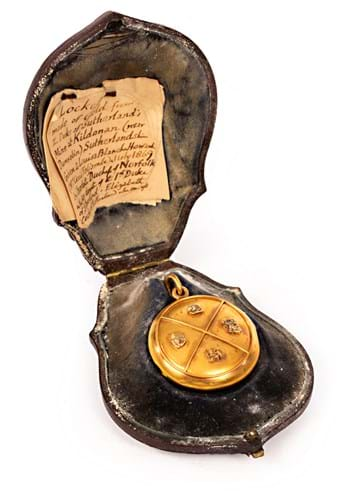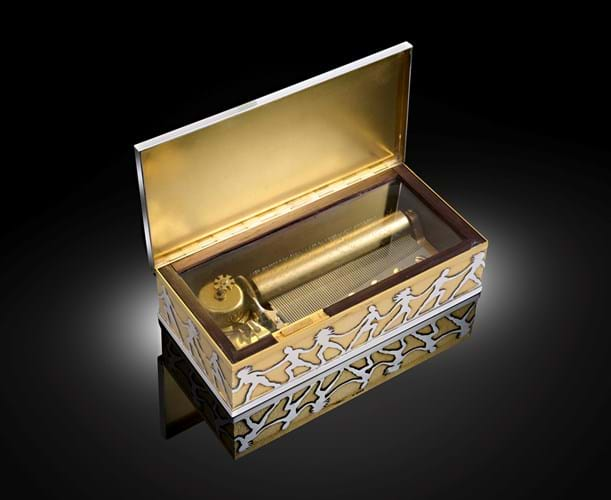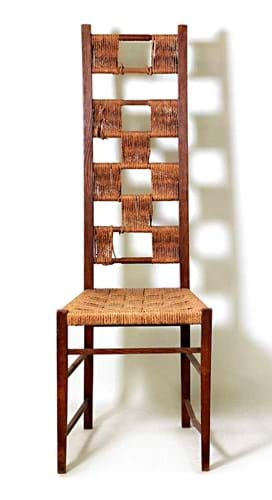1. George III mahogany serving table – £36,000
Ecclesiastic buildings can occasionally be the source of good secular antiques, typically items bequeathed in the distant past by parishioners for church use. Now sometimes deemed surplus to requirements, they occasionally come for sale.
This George III mahogany serving table, above, was part of a small group of objects consigned by Winchester Cathedral for sale at Bellmans in Wisborough Green, West Sussex on January 18-20.
The general model with its stop-fluted frieze, tablets hung with drapery swags and reeded tapered legs with block feet is one used by a number of top London cabinetmakers in the period c.1770-80. However, this is probably a provincial piece. The cluster of three legs to the corner, each united by a small timber stretcher, is particularly quirky.
Very much in its favour was its near untouched condition and good colour, a result of many years of use as a side table in the cathedral. Dealers would have formed a disorderly queue at the £600-800 estimate but instead the phone bidding kept going to £36,000.
2. George II seating furniture – £16,000
The furniture and works of art sale at Lawrences of Crewkerne on January 21 included a set of George II walnut seating furniture with an excellent provenance. The set, comprising a settee and six chairs, were made in c.1740 for Creech Grange near Wareham, the Dorset seat of the Bond family from the late 17th century until the estate was sold in 1975. The chairs were photographed in situ in the library by Country Life in 1931.
The house was remodelled in 1739-40 by Francis Cartwright, an architect from Blandford who worked in tandem with local furnishing firm John and William Bastard. A surviving note in Nathaniel Bond’s family account book for September 1741 reads: ‘pd. Bush for carriage of chairs from Blandford 5s.’ and for May 1742 is an entry recording ‘paid Mr Bastard’s bill £14.9.0’
The chairs and sofa, of good provincial manufacture were estimated together at £15,000-20,000 and found a buyer at £16,000.
3. Canadian silver tankard – £5000
Marked for Savage & Lyman, Montreal, c.1855-60, this silver tankard was awarded to British bare-knuckle boxer Tom Sayers. The inscription reads inscribed To Tom Sayers from a few admirers of English pluck, Montreal June 1860.
Born in Brighton in 1826, Sayers was one of the greats of Victorian prize fighting. Though only 5ft 8in tall and never weighing much more than 150lbs he frequently fought much bigger men and won. In a career which lasted from 1849-60, he lost only one of 16 bouts. He was recognised as heavyweight champion of England from 1857 until his retirement.
The tankard, a good example of Canadian silver as well as a sporting collectable, was part of a collection of memorabilia from the family of Johnny Douglas (1882-1930) who won a gold medal for boxing at the London Olympic Games in 1908 and his brother, Cecil ‘Pickles’ Douglas, a Victorian boxing referee.
The tankard took its top estimate of £5000 at Hansons in Etwall, Derbyshire on January 22.
4. Victorian ‘gold-rush’ locket – £10,000
This Victorian gold locket inscribed Kildonan sold for £10,000 (estimate £600-800) at Chorley’s in Prinknash Abbey, Gloucestershire, on January 25. It tells the story of a brief a Scottish gold rush.
A note with the lot reads Locket made of gold from the Duke of Sutherland’s Mine at Kildonan (near Dunrobin) Sutherlandshire. Given to Louisa Blanche Howard (Mrs Cecil Foljambe) in July 1869 by Charlotte Duchess of Norfolk who was daughter of the 1st Duke of Sutherland and Elizabeth Countess of Sutherland.
The Kildonan Gold Rush was a short-lived affair. A solitary nugget of gold weighing about 10 pennyweights was found in the River Helmsdale in 1818 and a ring made for the Duke of Sutherland. However it was the discovery of gold in the local burns by Robert Nelson Gilchrist, a native of Kildonan who had spent 17 years in the goldfields of Australia, in 1868 that caused a brief explosion of interest.
Over 600 adventurers made their way to the Highlands in 1869, each of them paying the Duke of Sutherland £1 a month for the permission to pan a small claim. By the end of the year, the Duke had received complaints from his tenant farmers and fishermen about the local disruption and he too was concerned that the deer stalking season would be compromised. He refused to grant any more licenses and brought prospecting to an end on December 31, 1869.
5. Stuart Devlin musical box – £6200
This parcel gilt musical box decorated with a frieze of figures is by Stuart Devlin (London 1975).
It was a special commission from Devlin, made for the family of the vendor who sold it at George Kidner in Lymington in 2005. It returned for sale at the Woolley & Wallis Silver & Objects of Vertu auction in Salisbury on January 25-26 with a guide of £3000-4000 and sold at £6200.
As the box (with a glass covered Swiss musical movement, marked Reuge, Sainte-Croix) is cased in Brazilian rosewood, the piece was sold with a Cites Article 10 certificate.
6. Vienna Secession chair – £12,500
This fine example of Vienna Secession furniture was bought last year in a junk shop on the south coast for just £5. The elm and wicker highback chair designed by Koloman Moser (1868-1918) in 1902 was entered to the January 25-26 Design auction at Sworders where, estimated at a tempting £2000-3000, it took £12,500.
The chair, authenticated by Dr Christian Witt-Dorring, a specialist on the Vienna Secession and curator of many exhibitions, was one of a series of new designs created by Moser for the wickerwork factory of Prag-Rudniker.
Published in 1903 in the magazine Das Interieur, the following year an article devoted to modern Austrian wicker furniture appeared in the influential UK publication The Studio.
A similar chair to this example sold for $22,000 (£16,500) at Christie’s New York in December 2019.


